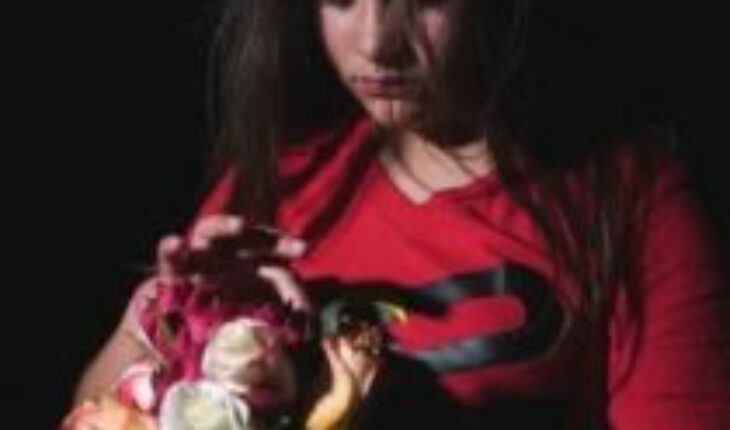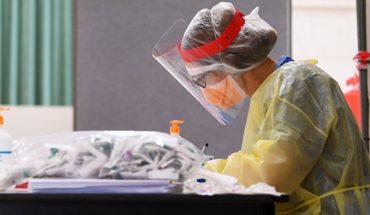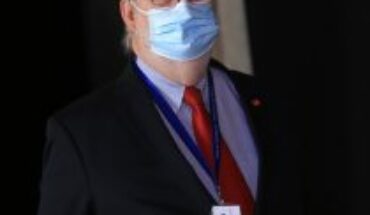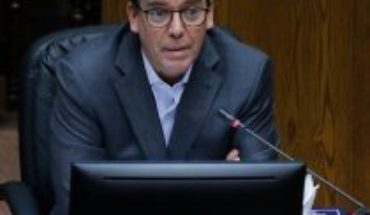Mass shootings in America’s schools generate a depressing sense of familiarity. However, life does not continue as before once the media furor is over.
In the most recent incident, Salvador Ramos, 18, opened fire at an elementary school in Texas, killing 19 children and two teachers. Robb Elementary School teaches children between the ages of 7 and 10.
Ramos stormed the school heavily armed with a handgun, an automatic rifle and high-capacity magazines. Finally, a border police officer who was in the vicinity at the time of the shooting shot him dead.
But how do these violent acts affect the daily lives of American school students, as well as teachers and parents?
It is understandable that school massacres generate public outrage and calls for measures to protect schools.
Following the incident at the Texas school, several school districts said increase police presence on campus this week.
Metal detectors were introduced in many U.S. schools after the Columbine massacre in 1999.
The same thing happened after incidents at Columbine High School (1999), Virginia Tech University (2007), Sandy Hook Elementary School (2012), and Parkland High School (2018).
Combined, those incidents resulted in the deaths of 88 innocent people.
“Every major event has resulted in calls to increase safety at their respective schools and to reassure people that their children won’t be victims of the upcoming Columbine, Virginia Tech or Sandy Hook,” says Cheryl Lero Jonson, an American expert on school shootings.
Jonson wrote in the magazine Victims & Offenders that, as a result, the metal detectors, X-ray machines, armed guards and personnel allowed to carry weapons at school they have become “platitudes”.
Traumatic trials
American schools have also become accustomed to plan in case of Massacres.
This means they’re doing more and more things, such as conducting threat assessments, drawing up emergency response plans, and having crisis teams and plans to act in case armed attackers come forward, Jonson says.
Drills testing what to do if an attacker breaks into a school have become common in the U.S.
One of the most controversial policies is the Drills in which it is intended that there is an armed attacker in action, which have been implemented in more than 95% of U.S. elementary schools, according to the Everytown for Gun Safety Support Fund.
In some of the most intense examples, those simulated shootings involve masked men carrying fake guns and students playing the role of victims covered in fake blood.
In a 2020 report, Everytown said there is “no data” to support the effectiveness of such drills.
Meanwhile, evidence suggests that these may actually be harmful to mental health.
The report quotes a father as saying, “My daughter — of daycare age — was trapped in the bathroom, alone, during a drill, and spent a year in therapy for extreme anxiety.
“Even in a new school, he still has to use the bathroom in the teachers’ office because he has post-traumatic stress disorder for that event.”
A police officer attends to a student volunteer, who acts as a victim in a drill.
In 2019, a school in Indiana was criticized for leaving students traumatized and teachers “bruised” and “terrified” after they were shot with pellets, execution-style.
“A lot of drills are for adults – school professionals or police officers – to see how they react in certain situations,” David Schonfeld of the National Centre for Crises in Schools and Grief told the BBC at the time.
“Asking children to pose as victims on the ground covered in fake blood is pointless and can be traumatizing.”
He added: “I’m concerned that these exercises suggest to children that they can do more than they, or anyone else, are actually capable of.”
“That just creates more trauma for the survivors of the shootings.”
Outside of school
These students also have less probabilGraduation rates and find a job earlier in your life.
There are also effects that are felt over a wider area; for example, economists say shootings have a economic impact as families leave the area.
The effects of school shootings are broad and include children’s mental health as well as their school performance.
And a Stanford University study found that the use of antidepressants by young people (under 20 years of age) increased by 21% in communities where school shootings had occurred.
Maya Rossin-Slater of Stanford’s Economic Policy Research Institute points out that mass shootings “they happen so often that we are becoming insensitive to them”.
“Maybe for people who survive, they just go back to normal life because that’s life in America. But what our study shows is that it doesn’t seem to be the case.
“When we think about the cost of school shootings, they are often quantified in terms of the cost to people who are killed or injured and their families. But the reality is that there are many more students exposed to school shootings who survive,” he says.
“Mass Shooting Generation”
According to an account by the specialized cross-platform group Education Week, only this year there was 27 school shootings with injuries or deaths in the U.S.
At least 67 people were injured or killed.
Children as young as 10 have been identified on social media by their parents as fatal victims of the Texas school massacre.
There have been 119 school shootings in which at least one person was killed or injured since 2018, when the agency began collecting data.
Jonson says today’s young people have earned the unfortunate label of “generation of the mass shootings”.
But despite having numerous impacts on people’s lives, shootings have failed to significantly influence public opinion on gun control, and Republican politicians and voters still view gun ownership favorably.
House Speaker Nancy Pelosi, D-Calif., said the Texas gunman had “stolen the future of children” and criticized some members of Congress for offering “hollow words after the shootings while opposing all efforts to save lives.”
Texas Republican Senator Ted Cruz called the shooting “an act of evil and mass murder”, but insisted that gun control policies will not prevent such incidents.





